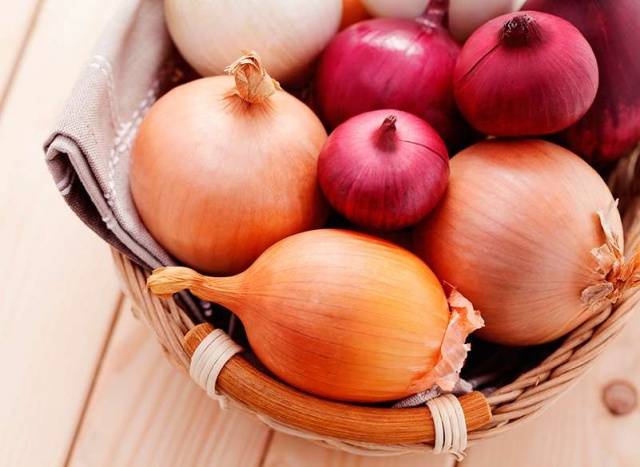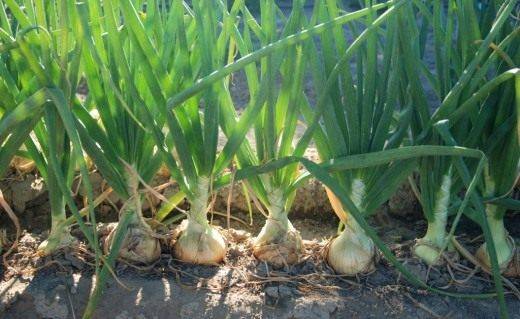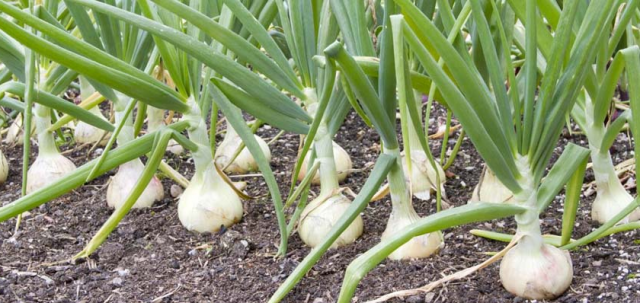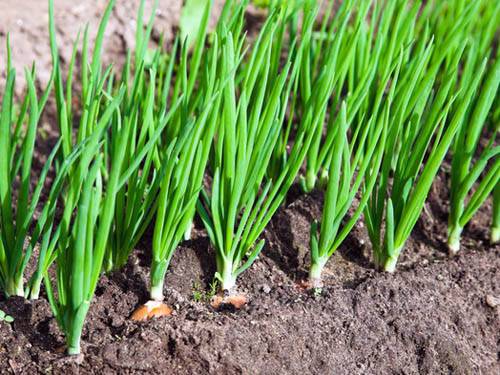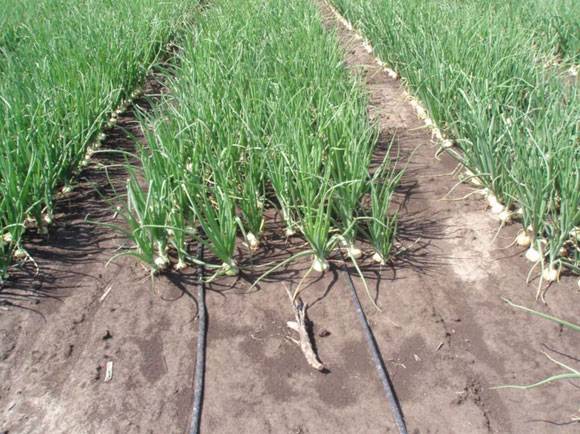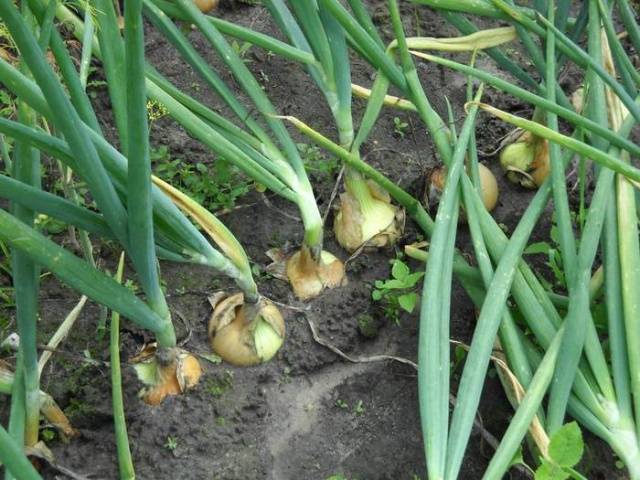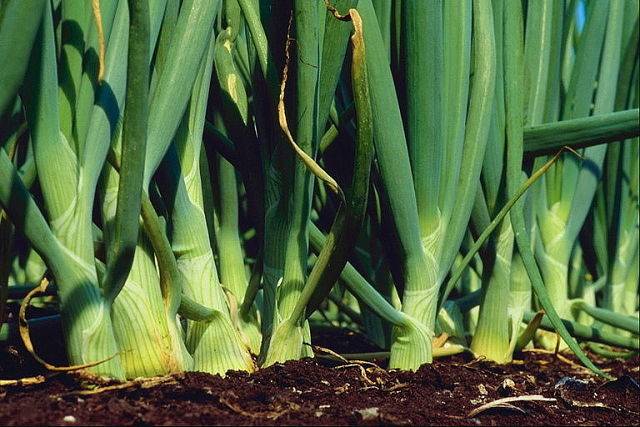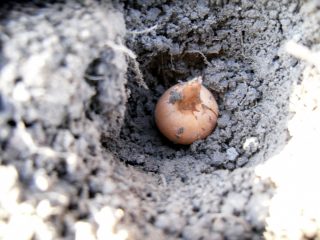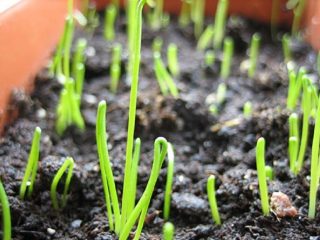Content
Not a single housewife can do without onions in the kitchen. That is why, in the summer season, many gardeners try to grow it in large quantities on their personal plots. The culture is unpretentious and can grow even on relatively poor soils, while feeding onions significantly increases the yield of vegetables, which allows not only using the product in season, but also stocking it up for the whole winter. How to feed onions correctly and in a timely manner will be discussed in the above article.
Minerals for vegetables
Onions are picky about the composition of the soil. For the growth of its heads, a complex of minerals is needed, especially nitrogen, phosphorus and potassium. In this case, the need for a particular microelement arises at a certain stage of crop cultivation. So, phosphorus is necessary for the bulbs from the moment of planting until full maturation, nitrogen is important at the stage of active growth of the turnip at the initial stage of the growing season. Potassium contributes to the formation of a dense, mature bulb, which is why fertilizers with this mineral are used for feeding onions on a turnip at a later stage of cultivation.
Timely feeding
Correct feeding of onions involves the repeated introduction of various organic or mineral fertilizers into the soil in small quantities. The choice of feeding depends on the stage of the plant's growing season. On average, gardeners feed onions 3-4 times per season. At the same time, fertilizers are applied to the soil for the first time in the fall, before the seeding plant is planted in the soil. In the spring and summer season, onions are fertilized according to a specific schedule.
Autumn soil preparation
A nutritious soil is the basis for growing a rich harvest of onions. You can increase the fertility of the soil by introducing organic matter. It is recommended to add manure to the soil during the autumn digging. The rate of application of this substance depends on the initial state and composition of the soil. If clay prevails on the site, then for every 1 m2 soil, you need to add 5 kg of peat, humus or manure in the same amount, as well as river sand in the amount of at least 10 kg. This will make the soil looser, lighter and more nutritious.
When growing onions on loams, sandy soils and black soil, you should also not neglect organic fertilizers. In such soils in the fall, you should add 5 kg of peat and 3 kg of manure (humus). This is quite enough for the renewal of land resources after fruiting in the previous season.
It is worth noting that it is not rational to introduce minerals into the soil in autumn, since they are largely washed out by melt water and do not bring significant benefits to plants. If necessary, when it was not possible to prepare the soil in advance, when planting seedlings in the ground, you can add some mineral fertilizing: 1 m2 earth 1 tsp. urea and 2 tbsp. l. superphosphate.
First feeding in spring
It is customary to plant onions in the soil with the arrival of heat, in early spring. This will allow the heads to gain the necessary strength to resist pests and start the feather early. Some varieties of crops are even intended for sowing before winter. One way or another, the first feeding of onions must be carried out in the spring, at a time when the length of the feather is approximately 3-4 cm.
For feeding onions in spring, various types of fertilizers are used, for example:
- Slurry is a well-known and commonly used natural organic fertilizer. You can prepare top dressing from it by stirring 1 tbsp. substances in 10 liters of water.
- In the absence of organic matter, ready-made mineral complexes, such as Vegeta, can be used to feed onions;
- You can get the mineral complex yourself by adding 30 g of ammonium nitrate, 20 g of potassium chloride and 40 g of simple superphosphate to a bucket of water. The last of the listed ingredients is added to the water a day before the expected feeding of the plants, since the superphosphate slowly dissolves.
Thus, spring feeding onions aims to apply fertilizers with a high nitrogen content. This microelement will allow the plant to activate its growth, increase the volume of the green feather, and grow the bulb.
Second feeding
The second feeding of onions on a turnip also occurs in late spring or early summer, depending on the time of sowing the seedlings. Experts recommend to carry it out approximately in 30-35 days from the day of the first feeding. To do this, you can use:
- Ready-made complex fertilizing "Agricola-2";
- Mineral mixture. It is prepared by adding 30 g of potassium chloride and ammonium nitrate in the same amount to a bucket of water. The required amount of superphosphate in this mixture is 60 g. After dissolving all the minerals, the gardener will receive a working mixture, which can be additionally diluted with water and used to water 2 m onions.2 soil;
- Among the organic fertilizers for the second feeding of onions on the head, herbal infusion should be used. It is prepared by soaking crushed weeds in water. To improve fermentation, the infusion is placed under pressure for several days. After preparation, the herb infusion is diluted with water until a light brown liquid is obtained.
The listed fertilizers are optimal means for feeding onions at the stage of active head formation. At the same time, they can be replaced with other complex fertilizers or dressings prepared according to folk recipes.
The final stage
The third, final feeding of the onion must be carried out at a time when its head has reached a diameter of 4-5 cm.At this stage, substances with a large amount of nitrogen cannot be used, since they can activate the growth of the bulbs and prevent the vegetables from ripening in time. The best fertilizers for onions at this time are:
- A mixture of superphosphate and potassium chloride. These minerals are added to 10 liters of water in the amount of 30 and 60 g, respectively. The solution is used for watering plants at 5 m2 soil;
- Means "Effekton-O" are used for feeding onions. However, it does not fully contain the required phosphorus, so it must be supplemented with superphosphate. For 10 liters of water 2 tbsp. l. the drug and 1 tbsp. l. phosphorus fertilizer;
- Ash contains large amounts of phosphorus and potassium. This substance can be regularly used to feed onions. Wood ash is sprinkled on the surface of the soil or an infusion is prepared from it. To do this, add 250 g of the substance to 10 liters of boiling water. It is necessary to infuse the solution for 3-4 days, after which it must be additionally diluted with water 1: 1 and used for watering plants.
Before using this or that fertilizer, it is necessary to analyze the condition of the onions. With the active growth of its heads and the presence of a lush green feather, some feeding can be skipped. However, completely depriving a vegetable of micronutrients is not worth it. This will not only slow down turnip growth and reduce yields, but also contribute to the development of diseases.
Important points
Onion supplements undoubtedly benefit the plants, however, their use should always be considered carefully. So, deciding to apply fertilizers, you must remember:
- fresh manure is unacceptable for onions, it provokes the development of diseases, can become a source of weeds and harmful insects;
- an increased concentration of nitrogen in the soil causes increased growth of green feathers and slows down the growth of turnip;
- the dose of mineral fertilizers when feeding onion sets cannot be exceeded, since this contributes to the accumulation of nitrates in its heads;
- when feeding onions, it is necessary to exclude the ingress of fertilizers on the surface of the feathers, otherwise the greens must be thoroughly rinsed with clean water;
- all the necessary minerals must be added in a complex, since the lack of one of them can negatively affect the absorption of other substances;
- fertilizers are better absorbed if applied after abundant watering;
- dry mineral mixtures in rainy weather can be simply scattered over the soil surface and repaired by loosening them to a depth of 3-5 cm.
Adhering to such simple rules, every gardener will be able to grow not only a plentiful, but also a healthy crop of vegetables.
Folk recipes
All of the above types of fertilizers are traditional. They are often used by gardeners not only for feeding onions, but also for other vegetable crops. However, there are some other types of onion dressing for turnip. For example, baker's yeast or ammonia is often used.
Double exposure to ammonia
Ammonia is a source of nitrogen, which allows it to be used for feeding onions at the initial stages of the growing season and with a lack of this trace element. The main symptoms of nitrogen deficiency are yellowing of feathers and slowed head growth.
You can prepare fertilizer with ammonia by adding 3 tbsp. l. of this substance in a bucket of water. Watering the onion with such a remedy is necessary at the root, since it can harm the green feathers. You can learn more about ammonia fertilizer from the video:
Baker's yeast
This product is able not only to saturate the soil with oxygen, but also to activate the vital processes of the beneficial microflora that is in the soil. Under the influence of yeast, organic matter decomposes better, and the onion itself receives all the necessary complex of minerals.
Yeast dressing should be used with the arrival of heat, because the fermentation process takes place only at a relatively high soil temperature. To prepare the fertilizer, dissolve 1 kg of fresh product in 5 liters of water. Sugar or jam is added to improve fermentation. You can increase the concentration of phosphorus and potassium in yeast fertilizer using wood ash (500 ml per bucket of solution). During active fermentation, the dressing is diluted with clean, warm water 1: 2, after which it is used for watering onions.
An illustrative example of the preparation of yeast feeding can be seen in the video:
Conclusion
The above folk remedies allow simple, improvised methods to effectively fertilize plants and get a decent harvest of vegetables.
Onions can be grown in any garden, however, this requires some effort. Timely correct feeding in combination with abundant regular watering in this sense is the basis of the entire cultivation process. By introducing certain minerals, the gardener can independently regulate the abundance of growth of a green feather or turnip, and accelerate the ripening process of vegetables. Thus, fertilizers are an essential tool that should be in the hands of a competent farmer.
